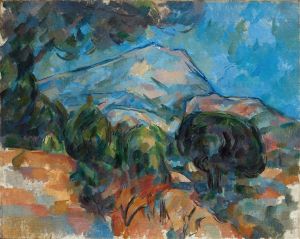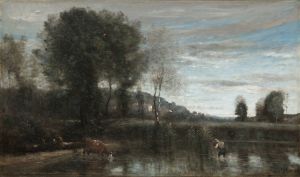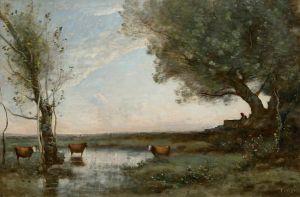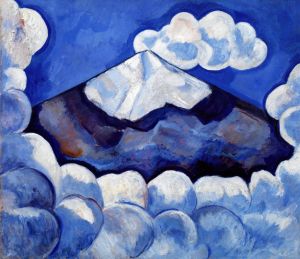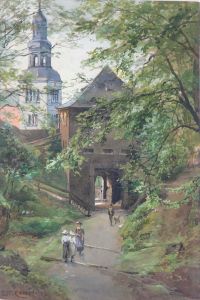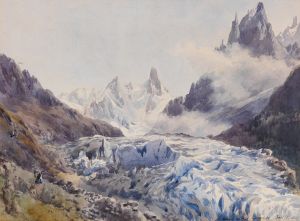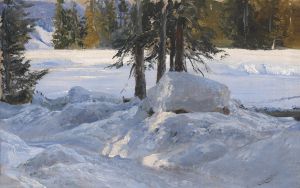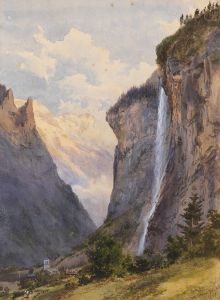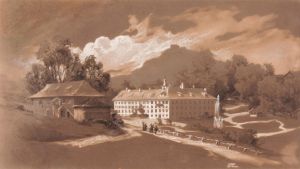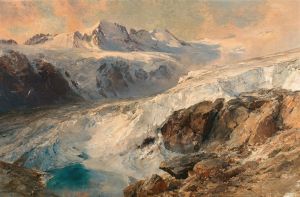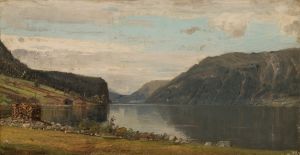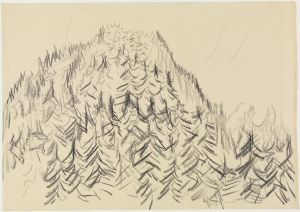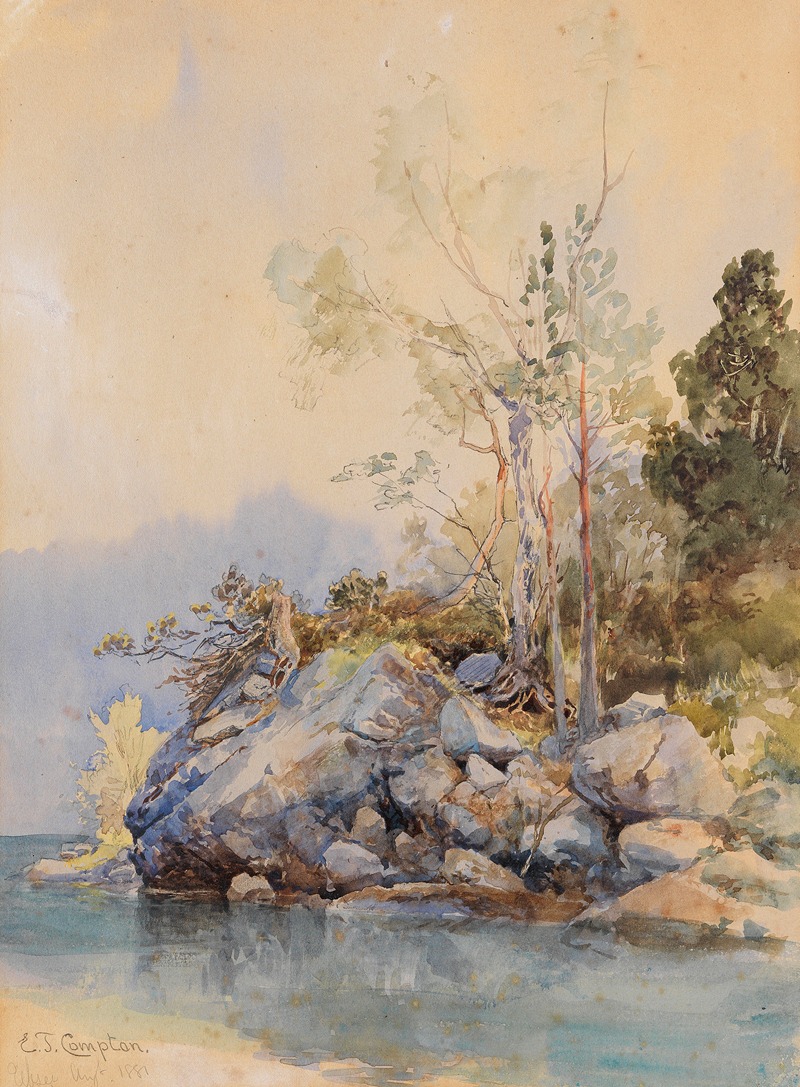
Eibsee
A hand-painted replica of Edward Theodore Compton’s masterpiece Eibsee, meticulously crafted by professional artists to capture the true essence of the original. Each piece is created with museum-quality canvas and rare mineral pigments, carefully painted by experienced artists with delicate brushstrokes and rich, layered colors to perfectly recreate the texture of the original artwork. Unlike machine-printed reproductions, this hand-painted version brings the painting to life, infused with the artist’s emotions and skill in every stroke. Whether for personal collection or home decoration, it instantly elevates the artistic atmosphere of any space.
Edward Theodore Compton was a renowned English-born German painter and illustrator, celebrated for his detailed and evocative landscapes, particularly those depicting the Alps. Among his notable works is the painting "Eibsee," which captures the serene beauty of the Eibsee lake, located at the base of the Zugspitze, Germany's highest peak, in the Bavarian Alps.
Compton was born on July 29, 1849, in Stoke Newington, London. He developed an early interest in art and nature, which was nurtured by his family. In 1867, Compton moved to Darmstadt, Germany, where he further honed his artistic skills. His fascination with the mountains began during his travels through the Alps, and this passion became a defining theme in his work.
"Eibsee" exemplifies Compton's mastery in portraying alpine landscapes. The Eibsee lake, known for its crystal-clear waters and picturesque setting, provided a perfect subject for Compton's artistic vision. The painting captures the tranquil atmosphere of the lake, surrounded by dense forests and the towering presence of the Zugspitze. Compton's use of light and shadow, along with his meticulous attention to detail, brings the scene to life, inviting viewers to experience the serene beauty of the Bavarian Alps.
Compton's technique involved a combination of plein air painting and studio work. He would often sketch outdoors to capture the essence of the landscape and then refine these sketches into detailed paintings in his studio. This approach allowed him to convey both the grandeur and the subtle nuances of the natural world.
Throughout his career, Compton's work was characterized by a deep appreciation for nature and a commitment to realism. His paintings often featured dramatic compositions, with a focus on the interplay between light and the rugged terrain of the mountains. "Eibsee" is no exception, showcasing his ability to depict the majesty of the natural environment with precision and sensitivity.
Compton's contributions to landscape painting were widely recognized during his lifetime. He exhibited his works in various prestigious venues, including the Royal Academy in London and the Munich Secession. His paintings not only captured the beauty of the Alps but also inspired a greater appreciation for the natural world among his contemporaries.
Edward Theodore Compton passed away on March 22, 1921, in Feldafing, Germany. His legacy endures through his extensive body of work, which continues to be celebrated for its artistic excellence and its ability to transport viewers to the breathtaking landscapes he so loved. "Eibsee" remains a testament to Compton's skill and his enduring passion for the alpine regions that defined much of his artistic career.





